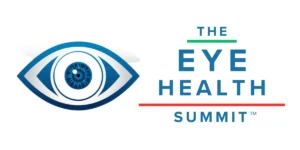LASIK SURGERY – VISION CORRECTION AND WHAT YOU SHOULD KNOW When it comes to the conversation about vision correction, LASIK has been a household name since it was approved by the FDA nearly 20 years ago. An acronym for laser in situ keratomileusis, LASIK is a two-step procedure.
The first step makes a micron-thin, circular flap in the cornea – the surface of the eye. Then, the surgeon gently lifts the flap to expose where the actual vision correction treatment will happen, just under the surface of the eye.
In the second step, a computer-guided excimer laser is used to permanently remove the microscopic pieces of tissue creating the patient’s vision problems. The flap is then laid back in place to act as a natural bandage and protect the reshaped portion of the cornea while it heals. Since LASIK eye surgery was first approved by the FDA, more than 19 million LASIK procedures have been performed in the U.S. and it has received more than 45 FDA approvals for treating myopia, hyperopia, and astigmatism.
Of course, the number one question most patients have about LASIK is if it’s safe. And, it is. LASIK is among the most studied elective procedures. More than 7,000 clinical studies have been conducted and published about LASIK. As a result, there is a tremendous amount of data supporting its safety and effectiveness. It also has one of the highest patient satisfaction rates of any elective procedure: more than 96 percent.
And, while LASIK eye surgery is relatively painless because numbing drops are used to anesthetize the eye before and during the procedure, some patients may experience some mild discomfort after for an average of about 5 hours.
Some patients experience symptoms during the recovery and healing process afterLASIK which generally include night vision visual symptoms such as glare, halos, ghosting and starbursts, as well as dry eye. Typically, these resolve by themselves over a period of time or with additional treatment.
LASIK is a great option for many people, but it’s not for everyone. Most surgeons report that upwards of 20% of their LASIK consultations are not good candidates for the procedure. To learn more about LASIK and to see if you might be a candidate visit https://americanrefractivesurgerycouncil.org/blog.
Dr. Neda Shamie is a renowned cataract, LASIK and corneal surgeon and partner of the Maloney-Shamie Vision Institute in Los Angeles. Prior to joining Dr. Maloney, Dr. Shamie operated a highly successful ophthalmic practice for 15 years. She was the Medical Director of the Doheny Eye Institute in Beverly Hills and is a Clinical Professor of Ophthalmology at the USC Keck School of Medicine.
Recognized as an expert in complex vision correction surgery, Dr. Shamie performs the full spectrum of procedures including advanced lens laser cataract surgery, iDesign LASIK & PRK, DSEK & DMEK, and Collagen Cross-Linking. Dr. Shamie has co-authored over 50 publications on the topics of cataract surgery and corneal transplantation, written 8 chapters for surgical textbooks and has led international lectures, courses, and seminars teaching colleagues about the advances in vision correction surgery.
She was the first surgeon in the Northwest to offer artificial corneal transplantation to patients as well as DMEK surgery. She is an active member of numerous ophthalmic societies, has served on the Cornea Clinical Committee of the American Society of Cataract and Refractive Surgery, was the President of the Los Angeles Society of Ophthalmology and has been voted by peers to be among America’s Top Doctors. For more information visit www.maloneyvision.com
LASIK Part 1
LASIK Part 2



